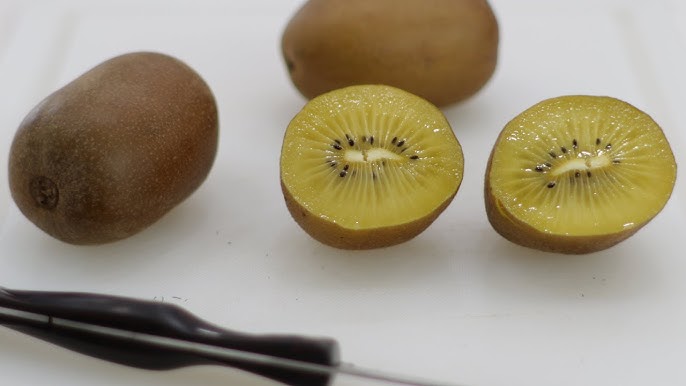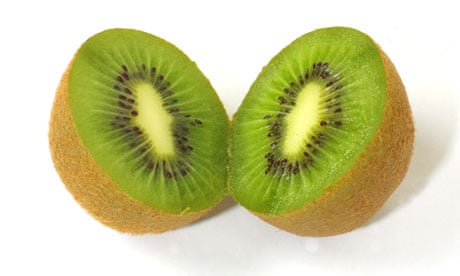Sampling Kiwis: A Tasty Trip right into What Do Kiwis Taste Like
Wiki Article
Exploring the Unique Characteristics and Fascinating Biology of Kiwi: A Comprehensive Study
Welcome to the fascinating world of kiwi! Prepare to be amazed as we uncover exactly how kiwis have actually adjusted to their flightless existence and discover their eco-friendly relevance.Physical Features
What are the physical attributes of a kiwi bird? The kiwi bird is a tiny, flightless bird indigenous to New Zealand. One of the most distinctive features of the kiwi bird is its lengthy, slender costs.The kiwi bird has an one-of-a-kind quill, with soft, hair-like feathers that appear like hair. Unlike many birds, the kiwi has little wings that are hidden under its plumes and are not functional for flying.
An additional intriguing physical attribute of the kiwi bird is its nostrils situated at the idea of its costs. This adaptation permits them to seek insects and worms, their key source of food, in the leaf trash on the woodland floor (what do kiwis taste like). Additionally, the kiwi bird has large, round eyes that are adjusted for low-light conditions, as they are primarily nighttime
Feeding Behaviors
To comprehend the feeding practices of the kiwi bird, you require to observe its foraging behavior and nutritional choices. Kiwis are unique in their feeding habits, as they are mostly nocturnal and rely heavily on their sense of scent to locate food. They have a long, slender costs that enables them to probe the ground trying to find insects, worms, and other invertebrates. These birds use their strong feeling of smell to spot victim concealed underneath the surface, and after that use their costs to extract it.Kiwis are omnivorous, suggesting they consume both plant and animal issue. In addition to insects, kiwis additionally consume fruits, seeds, and berries. They have a particular fondness for fallen fruits that are abundant in sugars, such as the berries of the shrubby tororaro plant. Kiwis have been observed feeding upon a wide range of plant types, indicating their flexibility to different food resources.
Remarkably, kiwis do not have a crop, which is a customized component of the digestion system found in numerous birds. Rather, their food passes directly from the esophagus to the belly. This might be an outcome of their distinct evolutionary background and ecological niche.
Recreation and Breeding
Currently allow's explore the interesting globe of kiwi reproduction and breeding, building upon our previous exploration of their special feeding practices. Kiwis have a rather interesting reproductive process. They are virginal birds, indicating they form lasting pairs. When a set has actually formed, they will stay with each other for life, which can be up to three decades in the wild.Throughout this time, the female kiwi will lay one to 2 eggs, which are unusually big compared to the bird's body size. Kiwi eggs are the biggest of any kind of bird in proportion to body weight.
Once the chicks hatch, they are born able and totally feathery to see (what do kiwis taste like). They are additionally rather precocious, suggesting they have the ability to deal with themselves reasonably rapidly. Also after the chicks have hatched out, the moms and dads continue to provide care and security for them up until they are fully independent, which can take a number of months.

Adaptations to Flightless Existence
During their transformative background, kiwis have actually created exceptional adaptations for their flightless presence. As a flightless bird, the kiwi has gone through several adjustments to its makeup and actions that allow it to thrive in its special atmosphere. One of one of the most visible adjustments is its wing framework. Unlike various other birds, kiwis have small, vestigial wings that are virtually pointless for flying. Rather, these wings have evolved into powerful appendages that aid in balance and security, allowing the kiwi to navigate its forest flooring the original source environment effortlessly.Another adjustment that kiwis have developed is their solid legs and feet. The kiwi's legs are muscular and positioned far back on its body, offering it with a low center of gravity and ideal balance.
In order to make it through without the ability to fly, kiwis have actually additionally developed an eager feeling of smell. Their long, slim beaks residence very delicate nostrils, permitting them to discover insects and worms under the forest floor. This impressive adjustment assists kiwis find food resources and preserve a balanced diet plan.
Ecological Significance
The ecological significance of kiwi lies in their function as vital seed dispersers in their indigenous habitat. As they relocate via the woodland floor, kiwi forage for insects, worms, and a range of plants.The kiwi's capability to distribute seeds is crucial for preserving the biodiversity and equilibrium of their ecosystem. By spreading seeds throughout various areas, they add to the growth and abundance of various plant species. In turn, these plants offer food and shelter for other animals, producing an internet of interdependencies within the community.
Moreover, kiwi play an essential role in managing the population of particular plant types (what do kiwis taste like). Some plants produce an excessive number of seeds, which can bring about congestion and minimal sources for other plants. By consuming and distributing these seeds, kiwi help control the growth of such plants, guaranteeing a healthier and this hyperlink a lot more diverse ecosystem
The eco-friendly importance of kiwi expands beyond their function as seed dispersers. Their tunneling habits also adds to dirt aeration and nutrient recycling, boosting the overall wellness of the forest flooring. Additionally, their feeding behaviors can assist control insect populaces, decreasing the threat of insect break outs that can hurt vegetation.
Conclusion
Finally, discovering the one-of-a-kind features and interesting biology of kiwi discloses its physical characteristics, feeding routines, reproduction and breeding patterns, along with its adaptations to a flightless presence. With its distinguishing characteristics and ecological importance, the kiwi functions as an exceptional instance of nature's diversity and adaptation. By recognizing and appreciating the kiwi's duty in its community, we can better promote preservation efforts to make more helpful hints sure the preservation of this impressive species for future generations.
Report this wiki page